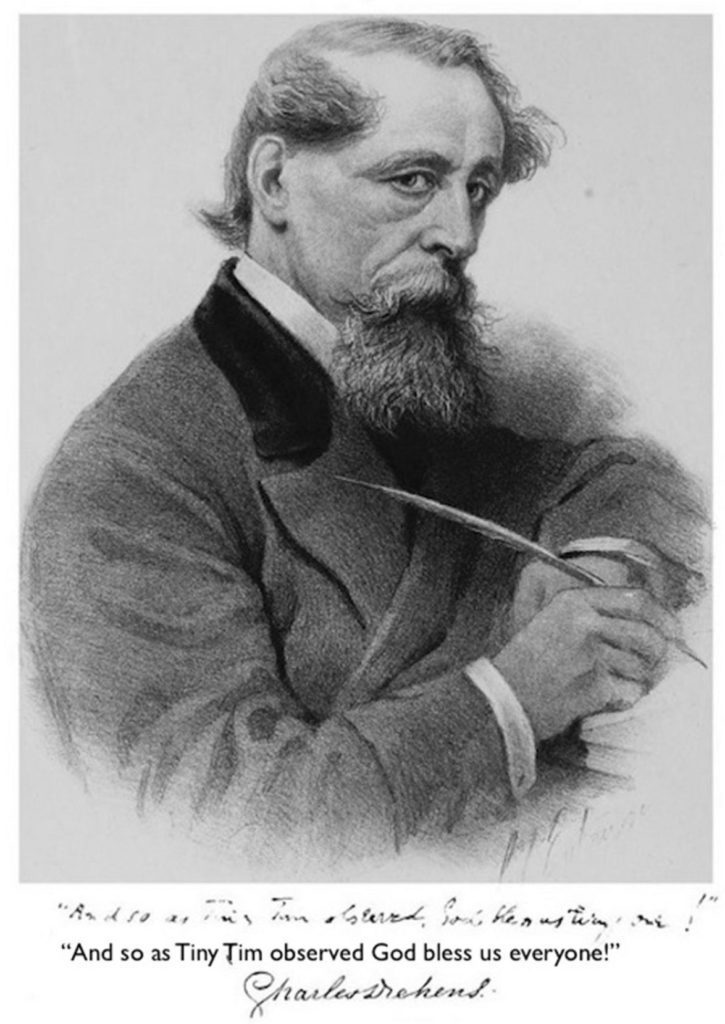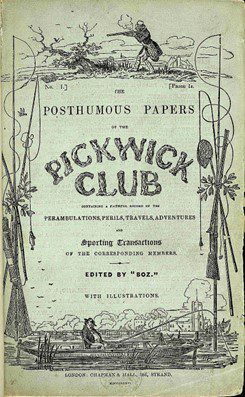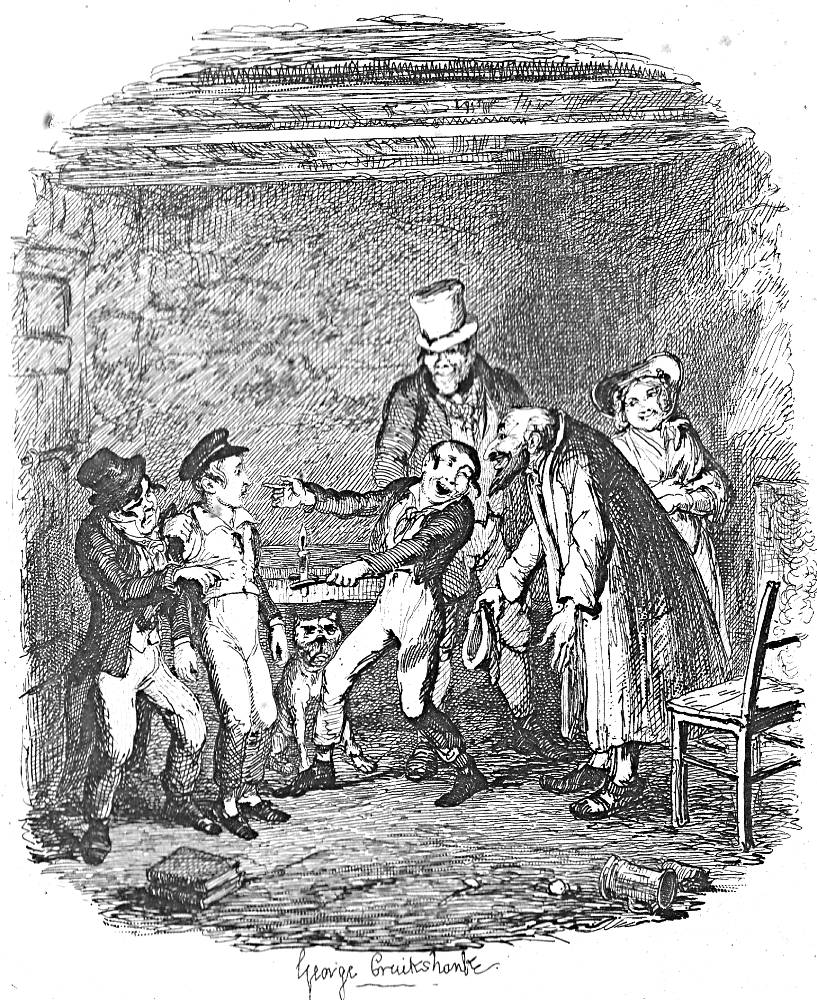JMS Pearce
Hull, England

What a gain it would have been to physic if one so keen to observe and facile to describe had devoted his powers to the medical art.
– British Medical Journal obituary, 1870
A huge biographical literature relates the turbulent life of Charles Dickens (1812–1870) (Fig 1) from its humble, poverty-ridden beginnings to his immense success and popularity as an author who strove to fight the forces of poverty and privation of the common people.1
His novels, first published in monthly installments, are filled with the visibly bizarre, grotesque, and often witty descriptions of illnesses both physical and mental. Occasionally, he verged on the bizarre with his portrayal of Mr. Krook who dies from spontaneous human combustion.
The accuracy of his vivid clinical images was praised in his British Medical Journal obituary (vide supra). Anatomist Richard Owen, Charles Darwin, Jane Marcet the chemist, Ada Lovelace, Charles Babbage, and other leading lights enjoyed his stories.
His characters often have memorably funny names, many based on aptronyms such as: Bumble the beadle; Wackford Squeers, cruel proprietor of Dotheboys Hall; Lady Honoria Dedlock, haughty mistress of Chesney Wold; old Fezziwig with his powdered wig; the miserly “scrouging” Scrooge; Toby Crackit, the witless burglar; stout Anne Chickenstalker; Luke Honeythunder, a loud, overbearing philanthropist; and Gradgrind of the school for facts and figures.
George Cruikshank, Hablot Knight Browne (Phiz), George Cattermole, Daniel Maclise, and Sol Eytinge produced elegant illustrative cartoons and sketches.
Of the many and diverse aspects of his life, writing, and labors, his descriptions of illness and disease illuminate like no other author’s the maladies that beset Victorian England. He also described many physicians and surgeons, not all with unqualified favor.2 His own medical afflictions have been discussed elsewhere.3,4,5
The Pickwickian syndrome

Dickens described Joe, the fat boy in The Pickwick Papers (Fig 2):
On the box sat a fat and red-faced boy, in a state of somnolency… the fat boy waddled to the same perch, and fell fast asleep instantly. “Damn that boy, he’s gone to sleep again. … Sleep!” said the old gentleman, “he’s always asleep. Goes on errands fast asleep, and snores as he waits at table. How very odd!” said Mr. Pickwick.
The obesity, daytime sleepiness, snoring, and possible sleep apnea described in Joe are now labeled the “obesity hypoventilation syndrome” or “Pickwickian syndrome.”
Asthmatic bronchitis
Major Bagstock had “a wheeze very like the cough of a horse,” Dickens tells us in Dombey and Sons. “Wheezing sounds would be heard, and the major’s blue would deepen into purple, while his eyes strained and started convulsively…”
In Our Mutual Friend, he observed, “Animate London with smarting eyes and irritated lungs was blinking, wheezing and choking; inanimate London was a sooty spectre.”
Epilepsy
Oliver Twist’s half-brother Monks was prone to convulsive attacks.
Monks shook his fist, and gnashed his teeth, as he uttered these words incoherently, and advancing towards Oliver as if with the intention of aiming a blow at him, fell violently on the ground, writhing and foaming in a fit…
Dickens probably depicted temporal lobe epilepsy, when Monks “remained silent for a few moments, and then removing his hands suddenly from his face, …that it was much distorted, and nearly blank.”
He described other sufferers of epilepsy. Guster in Bleak House had come from the notorious workhouse in Tooting. At Mr. Snagsby’s shop, Guster keeps the house up at night with her seizures. Her epilepsy may have resulted from head injury inflicted at this workhouse.
In Hard Times, the fraudster Josiah Bounderby died from a fit in the streets of Coketown.
Anthony Chuzzlewit in The Life and Adventures of Martin Chuzzlewit dies in a fit:
Extended on the floor, with the old clerk upon his knees beside him. He had fallen from his chair in a fit, and lay there, battling for each gasp of breath, with every shrivelled vein and sinew starting in its place…
Tuberculosis

Dickens was only too familiar with tuberculosis; his sister Fanny, and her son Harry died of it. In The Life and Adventures of Nicholas Nickleby, Smike is dying with the “hectic fever” of tuberculosis. Dickens described patients terminally ill with tuberculosis: “a disease in which death and life are so strangely blended that death takes the glow and hue of life, and life the gaunt and grisly form of death.” He lyrically relates Smike’s last minutes:
He fell into a light slumber, and waking smiled as before; then, spoke of beautiful gardens, which he said stretched out before him, and were filled with figures of men, women, and many children, all with light upon their faces; then, whispered that it was Eden—and so died.
Whether Tiny Tim Cratchit in A Christmas Carol (Fig 3) was suffering from Potts disease (tuberculous spinal caries) is less certain. Tim was a weakly, malnourished child, crippled and using crutches, but he improved after Scrooge had remedied his family’s poverty. Alternative speculations have included rickets, cerebral palsy, and renal tubular acidosis.
Movement disorders
The hyperactive, obsessional Mr. Pancks was prone to make:
A singular and startling noise, produced by a strong blowing effort in the region of the nose, … and “such an extraordinarily abrupt, short, and loud utterance of the monosyllable ‘Oh’.
This suggests the Giles de la Tourette syndrome, not recognized until thirty years later in 1885.
Jeremiah Flintwinch is portrayed in Little Dorrit: “His neck was so twisted that the knotted ends of his white cravat usually dangled under one ear … a good account of spasmodic torticollis. And Frederick Dorrit had features suggestive of Parkinson’s disease6:
…stooped a good deal, turning round in a slow, stiff, stooping manner, and speaking with a weak and quavering voice…
A retrospective diagnosis of dysphonia has been made in Mr. Creakle in David Copperfield:
He had no voice, but spoke in a whisper. The exertion this cost him, or the consciousness of talking in that feeble way, made his angry face so much more angry, and his thick veins so much thicker, when he spoke; he is usually accompanied by the man with the wooden leg, acting with his strong voice, as Mr. Creakle’s interpreter to the boys.
Head injury
Eugene Wrayburn in Our Mutual Friend suffers from fluctuating consciousness, characteristic of severe brain injury. Wrayburn:
is sinking under injuries received at the hands of a villain… He is almost always insensible. In a short restless interval of sensibility, or partial sensibility… Sometimes his eyes were open, sometimes closed. When they were open, there was no meaning in their unwinking stare at one spot straight before them, unless for a moment the brow knitted into a faint expression of anger or surprise. Then, Mortimer Lightwood would speak to him and on occasion would be so far roused as to make an attempt to pronounce his friend’s name. But in an instant consciousness was gone again.
He describes the consequences of brain contusion in Mrs. Gargery in Great Expectations, who had been “struck with something blunt and heavy, on the head and spine.” She lay on her bed and:
Her sight was disturbed, so that she saw objects multiplied, and grasped at visionary teacups and wine glasses, instead of the realities; her hearing was greatly impaired; her memory also; and her speech was unintelligible. When, at last, she came round so far as to be helped downstairs, it was still necessary to keep a slate always by her, that she might indicate in writing what she could not indicate in speech… A tremulous uncertainty of the action of all her limbs soon became a part of her regular state.
Paraplegia
Dickens gives the history of Grandfather Smallweed in Bleak House. “He is in a helpless condition as to his lower, and nearly so as to his upper, limbs, but his mind is unimpaired.” “Do you rub your legs to rub life into ‘em?’” Mr. George asks of him. He is given a cushion to throw at his wife whenever she annoyed him, an act which not only knocked the demented Mrs. Smallweed sideways, but caused Grandfather Smallweed to collapse and necessitated his being “shaken up like a great bottle and poked and punched like a great bolster” by his granddaughter.
Mrs. Horace Crewler, the mother-in-law of gentle Tommy Traddles in David Copperfield, was also supposedly paraplegic, “the one that has something the matter with her spine,” but it has been suggested that her paraplegia was hysterical.7
Stroke and aphasia
In Dombey and Son, Mrs. Skewton’s last illness leaves her unable to speak and with right-sided paralysis—an association Dickens plainly had observed:
And there she lay speechless, and staring at the ceiling, for days; sometimes making inarticulate sounds in answer to such questions as did she know who were present, and the like: sometimes giving no reply either by sign or gesture, or in her unwinking eyes. At length she began to recover consciousness… She made stranger confusions in her mind and memory… She fell into the habit of confounding the names of her two sons-in-law the living and the deceased … she cut short some of her words, and cut out others altogether…
In Bleak House, Mr. Krook, a “gin-drinking rag and bottle merchant,” is dysphasic, hoarding documents that he will never read:
he can make all the letters separately and he knows most of them separately when he sees them … but he can’t put them together.8
In Martin Chuzzlewit, Mr. Pecksniff and Chuzzlewit’s son, Jonas, see Anthony Chuzzlewit extended on the floor, with the old clerk on his knees beside him. The day after the episode, he is dysphasic and near to death:
Old Anthony …He spoke to them—in something of his own voice too, but sharpened and made hollow, like a dead man’s face. What he would have said, God knows. He seemed to utter words, but they were such as man had never heard. And this was the most fearful circumstance of all, to see him standing there, gabbling in an unearthly tongue.
In Little Dorrit, Dickens describes Mrs. Clennam’s stroke:
There, Mrs Clennam dropped upon the stones; and she never from that hour moved so much as a finger again, or had the power to speak one word. For upwards of three years she lived and died a statue.
Mental defect
In Barnaby Rudge, his first historical novel, the hapless Barnaby is well described as an example of an “innocent” with mental subnormality:
There was something even plaintive in his wan and haggard aspect. But, the absence of the soul is far more terrible in the living man than in a dead one; and in this unfortunate being its noblest powers were wanting…. The fluttered and confused disposition of all the motley scraps that formed his dress, bespoke, in a scarcely less degree than his eager and unsettled manner, the disorder of his mind, and by a grotesque contrast set off and heightened the more impressive wildness of his face. …
He describes the mother Mary’s sadness:
How often since that time had she sat beside him night and day, watching for the dawn of mind that never came.
Other activities
Dickens has been described as a hypochondriac,9 prone to dabble in alternative medicine. He was interested in Gall’s phrenology, and also in mesmerism. He was influenced by his friend Dr. John Elliotson, a professor of medicine at University College London, whose practice of mesmerism had incurred the wrath of his colleagues, forcing his resignation.
An insomniac, Dickens often walked the London streets at night and there made skillful and detailed observations of its people and their living conditions. The subjects in his often picaresque stories were eccentrics, villains, cruel teachers, phony tycoons, amorous widows, wily lawyers, and charlatans.
He reported that his research “strengthened me in the conviction that searching sanitary reform must precede all other social remedies.” After 1850, his new journal Household Words became a powerful tool for sanitary reform. In it he wrote about and raised funds to support many institutions and hospitals, amongst them: St. Luke’s Hospital for the Insane, the Hospital for Consumption and Diseases of the Chest, and Great Ormond Street Hospital for sick children, which opened in 1852.

He was the friend and advocate of many wretched, deprived, or crippled children, most famously Oliver Twist (Fig 4) and Tim Cratchit.
He visited hospitals whose poor provisions needed his help, and wrote of their plight in his Household Words, and in Our Mutual Friend. He met and influenced many civic dignitaries and doctors, not least Robert Jones, the celebrated orthopedic surgeon.
Moved by the systemic dominance of the rich over the poor, in Nicholas Nickleby he remarked:
Thus, cases of injustice, and oppression, and tyranny, and the most extravagant bigotry, are in constant occurrence among us every day.
To improve the dire living conditions of the ill-fated poor, he helped to plan a large housing project known as Columbia Square, in Bethnal Green, which was completed in 1862. He also guided improvement of London’s fouled water supply. In 1847 with his philanthropist friend Angela Burdett Coutts, he established Urania Cottage, an asylum for rehabilitating prostitutes and “fallen women.” Simon Callow (The Guardian, Feb 4, 2012) elegantly eulogizes his public services:
Both in his work and in his life, to trying to right the wrongs inflicted by society, above all, perhaps by giving the dispossessed a voice. From the moment he started to write, he spoke for the people, and the people loved him for it, as do I.
Dickens’s final illness
In 1868, while walking near Palace Gate, Dickens noticed that “he could read only the halves of the letters of the shop doors that were on his right as he looked.” Identical symptoms recurred on March 21, 1870:
[He] told us that as he came along, walking up the length of Oxford Street, the same incident had recurred as on the day of a former dinner with us, and he had not been able to read, all the way, more than the right-hand half of the names over the shops.10
He had clearly suffered transient cerebral ischemia with a left homonymous hemianopia. On April 18, 1869, his friend and doctor Frank C. Beard referred him to Sir Thomas Watson because of a further episode of giddiness and sensory disturbances in his left arm and leg. Watson thought this was “the result of extreme hurry, overwork, and excitement, incidental to his readings,” and advised him to reduce his work. On June 8, 1870 at dinner, he collapsed and was diagnosed with apoplexy. He died the next day, aged fifty-eight, at his home Gad’s Hill Place in Kent.
We may conclude with Lord Brain: “At a time when medicine itself was only just beginning to recognize the importance of physical signs, the characters in the world of Dickens’s imagination are so real that they have recognizable diseases of body and mind, described with the accuracy and insight of a great clinical observer.”6
References
- Slater, Michael. “Dickens, Charles John Huffam (1812–1870), novelist.” Oxford Dictionary of National Biography 23 Sep. 2004.
- Cosnett JE. “Dickens and doctors: vignettes of Victorian medicine.” British Medical Journal 1992;305:1540-2.
- Mendes L. “The medical journey of Charles Dickens.” Hektoen Int Spring 2016.
- McManus IC. “Charles Dickens: A Neglected Diagnosis.” Dickens Quarterly 2008;25(2):98–106.
- Cambridge N. “Bleak Health: Charles Dickens’s Medical History Revisited.” The Dickensian; London, logo 2018;114, Iss. 505:117.
- Larner AJ. “Dickens and neurology.” Brain 2020;143(6):1957-1961.
- Brain R. “Dickensian Diagnoses.” British Medical Journal 1955; 1553–1556.
- Devlin H. “Charles Dickens’ contribution to medicine highlighted in London exhibition.” The Guardian May 16 2018.
- Cambridge N. Bleak Health: The Medical History of Charles Dickens and His Family. Brighton, Edward Everett Root Publishers, 2022.
- Forster J. The Life of Charles Dickens, ed. JWT Ley. London, Cecil Palmer, 1928.
JMS PEARCE is a retired neurologist and author with a particular interest in the history of medicine and science.
Highlighted in Frontispiece Volume 16, Issue 2 – Spring 2024

Leave a Reply